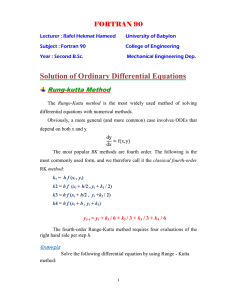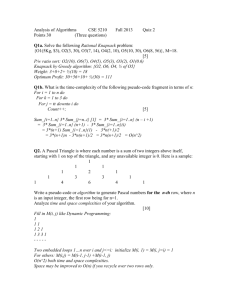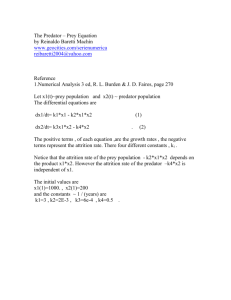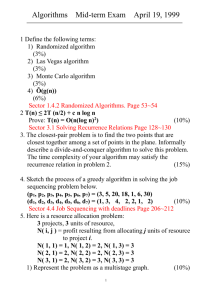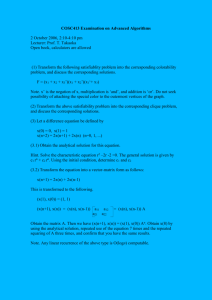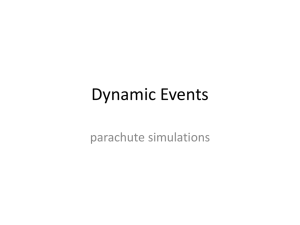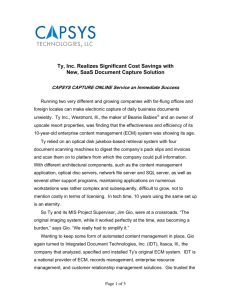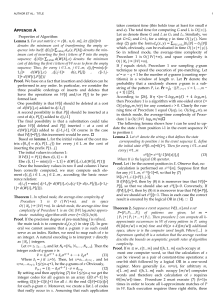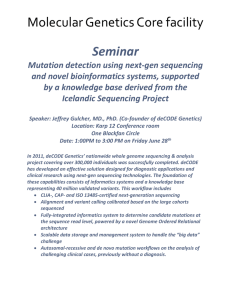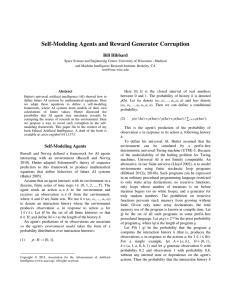Revised version of MS: 1037761204313378
advertisement
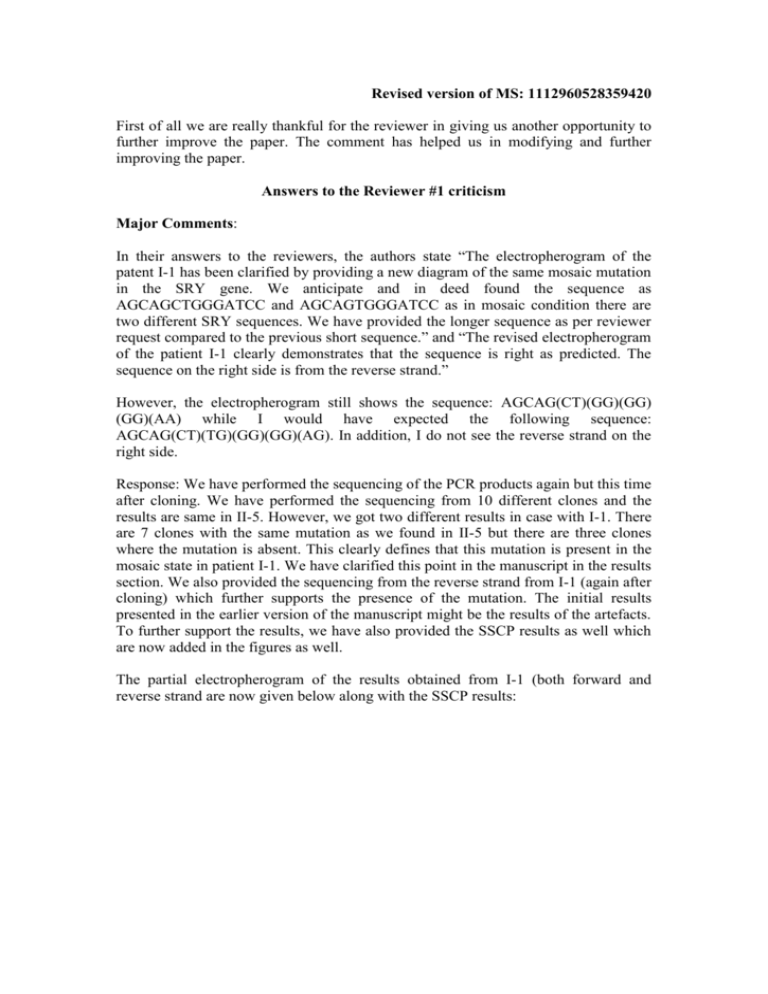
Revised version of MS: 1112960528359420 First of all we are really thankful for the reviewer in giving us another opportunity to further improve the paper. The comment has helped us in modifying and further improving the paper. Answers to the Reviewer #1 criticism Major Comments: In their answers to the reviewers, the authors state “The electropherogram of the patent I-1 has been clarified by providing a new diagram of the same mosaic mutation in the SRY gene. We anticipate and in deed found the sequence as AGCAGCTGGGATCC and AGCAGTGGGATCC as in mosaic condition there are two different SRY sequences. We have provided the longer sequence as per reviewer request compared to the previous short sequence.” and “The revised electropherogram of the patient I-1 clearly demonstrates that the sequence is right as predicted. The sequence on the right side is from the reverse strand.” However, the electropherogram still shows the sequence: AGCAG(CT)(GG)(GG) (GG)(AA) while I would have expected the following sequence: AGCAG(CT)(TG)(GG)(GG)(AG). In addition, I do not see the reverse strand on the right side. Response: We have performed the sequencing of the PCR products again but this time after cloning. We have performed the sequencing from 10 different clones and the results are same in II-5. However, we got two different results in case with I-1. There are 7 clones with the same mutation as we found in II-5 but there are three clones where the mutation is absent. This clearly defines that this mutation is present in the mosaic state in patient I-1. We have clarified this point in the manuscript in the results section. We also provided the sequencing from the reverse strand from I-1 (again after cloning) which further supports the presence of the mutation. The initial results presented in the earlier version of the manuscript might be the results of the artefacts. To further support the results, we have also provided the SSCP results as well which are now added in the figures as well. The partial electropherogram of the results obtained from I-1 (both forward and reverse strand are now given below along with the SSCP results: (A) (B) 1 2 3 I 2 1 II 1 2 3 4 5 Figure 1 Figure 1: (A) Polymerase chain reaction-SSCP analysis of SRY gene. Lane 1, SRY from normal male control DNA (II-2); lanes 2 and 3: SRY with altered band from patient I-1 and II-5 respectively. The migration pattern from I-1 clearly indicates that there are two different alleles that he shares with normal son (not shown) and affected daughter; (B) Pedigree of the affected family also showing partial electropherograms of the mutation (deletion of C in the HMG box (helix 2) leading to a premature stop codon as L94fsX180) identified in patient II-5 and her father (I-1). These results were obtained by sequencing of the amplification products after cloning. Wild-type electropherogram identified in the normal brother (II-2) is also indicated. White symbols denote unaffected individuals where as black symbols denote affected individuals. The arrow indicates the proband (II-5). Reverse strand form patient I-1: The Associate Editor has also provided the following comments: "Please address the reviewer's points. It may be that you need to consult with someone outside your current group for advice on the sequence trace and sequence interpretation." Response: We have consulted the expert in this area and that is the main reason why we performed cloning before sequencing. As indicated above, the present results further confirm the presence of the mutation in mosaic state in I-1. Overall, the paper has been further modified and we hope the present version of the paper is now suitable and acceptable for publication in BMC Medical Genetics.
